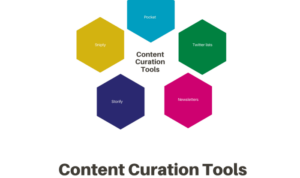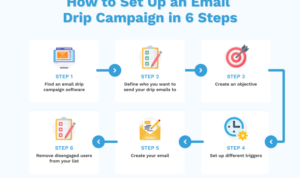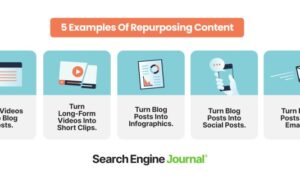Developing a Customer Engagement Strategy dives deep into the art of connecting with your audience, setting the stage for business triumph. From understanding the importance of engagement to leveraging technology, this guide will equip you with the tools needed to thrive in today’s competitive market.
Understanding Customer Engagement
Customer engagement is all about building a strong connection and relationship with your customers. It involves interacting with them, listening to their feedback, and providing personalized experiences to meet their needs.
Customer engagement is crucial for business success as it helps in creating loyal customers who are more likely to repeat purchases, refer your business to others, and provide valuable feedback for improvement.
Examples of Effective Customer Engagement Strategies
- Personalized Email Marketing Campaigns: Sending targeted emails based on customer preferences and behavior to increase engagement and drive sales.
- Social Media Contests and Giveaways: Encouraging customers to interact with your brand on social media platforms by hosting contests and offering prizes.
- Responsive Customer Service: Providing quick and efficient responses to customer inquiries and issues to show that you value their feedback and are dedicated to their satisfaction.
- Exclusive Loyalty Programs: Rewarding loyal customers with exclusive discounts, perks, and personalized offers to foster long-term relationships.
Components of a Customer Engagement Strategy: Developing A Customer Engagement Strategy
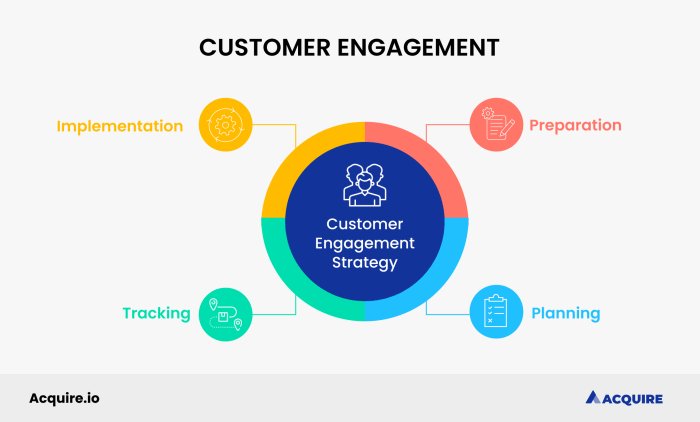
Customer engagement strategies are essential for businesses to build strong relationships with their customers. These strategies involve various key components that work together to create a positive and interactive experience for customers.
Key Components of a Customer Engagement Strategy
- Personalization: Tailoring products, services, and communications to meet the individual needs and preferences of customers.
- Multi-channel Communication: Utilizing various channels such as social media, email, and in-person interactions to engage with customers.
- Feedback Mechanisms: Providing opportunities for customers to share their thoughts, opinions, and feedback, allowing businesses to improve their products and services.
- Reward Programs: Offering incentives and rewards to customers for their loyalty and engagement with the brand.
Communication in Customer Engagement
Effective communication is crucial in customer engagement as it helps businesses connect with their customers on a deeper level. By actively listening to customer feedback, responding promptly to inquiries, and providing relevant and valuable information, businesses can build trust and loyalty with their customers.
Examples of Successful Customer Engagement Strategies
Apple:
- Apple’s “Today at Apple” sessions offer customers free workshops and events at their retail stores, providing valuable educational experiences and fostering a sense of community among Apple users.
Starbucks:
- Starbucks’ loyalty program, Starbucks Rewards, allows customers to earn points for purchases and redeem them for free drinks and food, incentivizing repeat visits and engagement with the brand.
Developing a Customer Persona
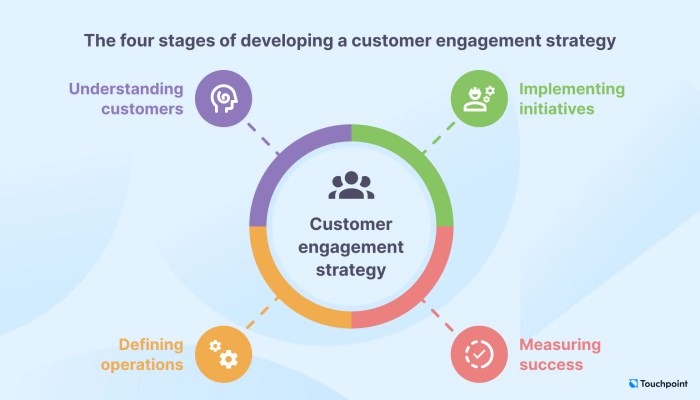
Creating customer personas is a crucial step in developing a customer engagement strategy as it helps businesses better understand their target audience. By defining specific characteristics, behaviors, and preferences of their ideal customers, businesses can tailor their marketing efforts to effectively engage with them.
The Process of Developing Detailed Customer Personas
- Conduct research: Gather data through surveys, interviews, and analytics to identify common traits among your customers.
- Identify demographics: Determine age, gender, location, income level, and other relevant demographic information.
- Explore psychographics: Understand values, interests, attitudes, and lifestyle choices that influence customer behavior.
- Create profiles: Develop fictional characters representing different customer segments based on the collected data.
- Refine personas: Continuously update and refine personas as you gather more insights and feedback.
Examples of How Businesses Use Customer Personas to Enhance Engagement, Developing a Customer Engagement Strategy
- Personalized marketing: Tailor content, offers, and communication channels based on the preferences of each persona.
- Product development: Design products or services that cater to the specific needs and desires of different customer segments.
- Customer service: Provide customized support and solutions that resonate with the personas’ expectations and communication styles.
- Brand positioning: Craft brand messaging and positioning strategies that align with the values and aspirations of the identified personas.
Leveraging Technology for Customer Engagement
In today’s digital age, technology plays a crucial role in shaping effective customer engagement strategies. Businesses need to leverage various tools and platforms to connect with their customers on a deeper level and build long-lasting relationships.
Utilizing Social Media Platforms
- Social media platforms like Facebook, Instagram, and Twitter offer businesses the opportunity to engage with customers in real-time, respond to queries, and showcase products or services.
- By creating engaging content, running targeted ads, and hosting interactive live sessions, companies can enhance customer interaction and loyalty.
Implementing Customer Relationship Management (CRM) Systems
- CRM systems enable businesses to track customer interactions, manage leads, and personalize communication based on customer preferences and behavior.
- By utilizing CRM data effectively, companies can tailor their marketing strategies, offer personalized recommendations, and provide timely support to customers.
Integrating Chatbots and AI Technology
- Chatbots powered by artificial intelligence can efficiently handle customer queries, provide instant responses, and streamline the customer service process.
- By integrating AI technology, businesses can offer personalized recommendations, predict customer needs, and deliver a seamless shopping experience.


